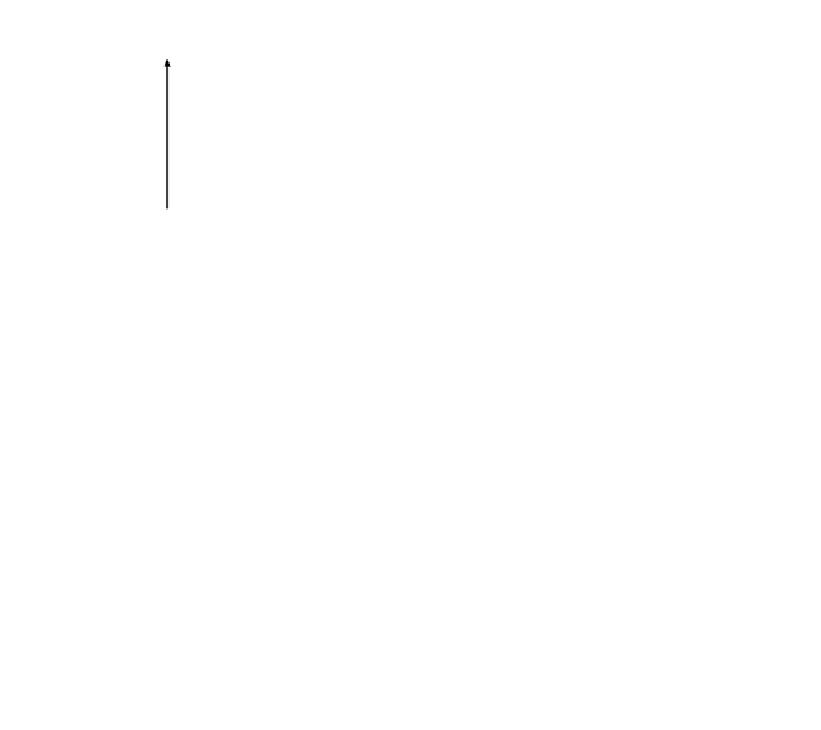Environmental Engineering Reference
In-Depth Information
For U
f
(increase)
For U
f
(decrease)
τ
τ
φ
φ
C
C
U
f
(
)
σ
σ
U
f
()
σ
c
σ
c
∆σ
a
σ
3
∆σ
a
σ
3
σ
1
σ
1
Effective stress
envelope
Undrained strength
envelope (S
u
vs.
σ
c
)
Effective stress
circle
τ
φ
Total stress
envelope
Total stress
circle
S
u
2
45
φ
/2
S
u
1
σ
σ
c
1
σ
c
2
Figure 11.21.
Shear strength envelopes for isotropically consolidated undrained (IC-U) strength tests.
Note that the effective stress Mohr circle will be to the left or right of the total stress
circle, depending on whether the pore pressures generated during shear are positive or
negative.
(c) For these zones, develop the composite shear strength diagram shown in
Figure 11.22
,
from the effective stress and undrained strength envelopes in Figure 11.21.
(d) For the zones which are above normal maximum operating level, e.g. above FSL, esti-
mate the undrained strengths from the undrained strength envelope, allowing for any
known cracking or softening.
(e) For undrained or partially drained zones below the normal maximum operating level,
determine the strength from the composite envelope i.e. the minimum of effective
stress and undrained strengths. The normal stress used to select the shear strength
from the composite envelope should be the effective consolidation stress acting on the
base of the slice after drawdown, i.e. the total normal stress minus the pore pressure
taken from the drawdown flow net (or from measured pore pressures), after allowing
for the factors discussed in Section 11.4.3.2.
This procedure has the following characteristics:
(i) It uses undrained strengths, where these are less than effective stress strengths, to
allow for the effects of pore pressures developed during the undrained loading.
(ii) It uses effective stress strengths, where these are lower than undrained strengths, in
areas normally submerged by the reservoir. This is as recommended by USBR (1987),






































